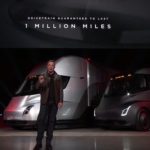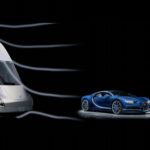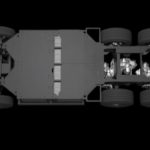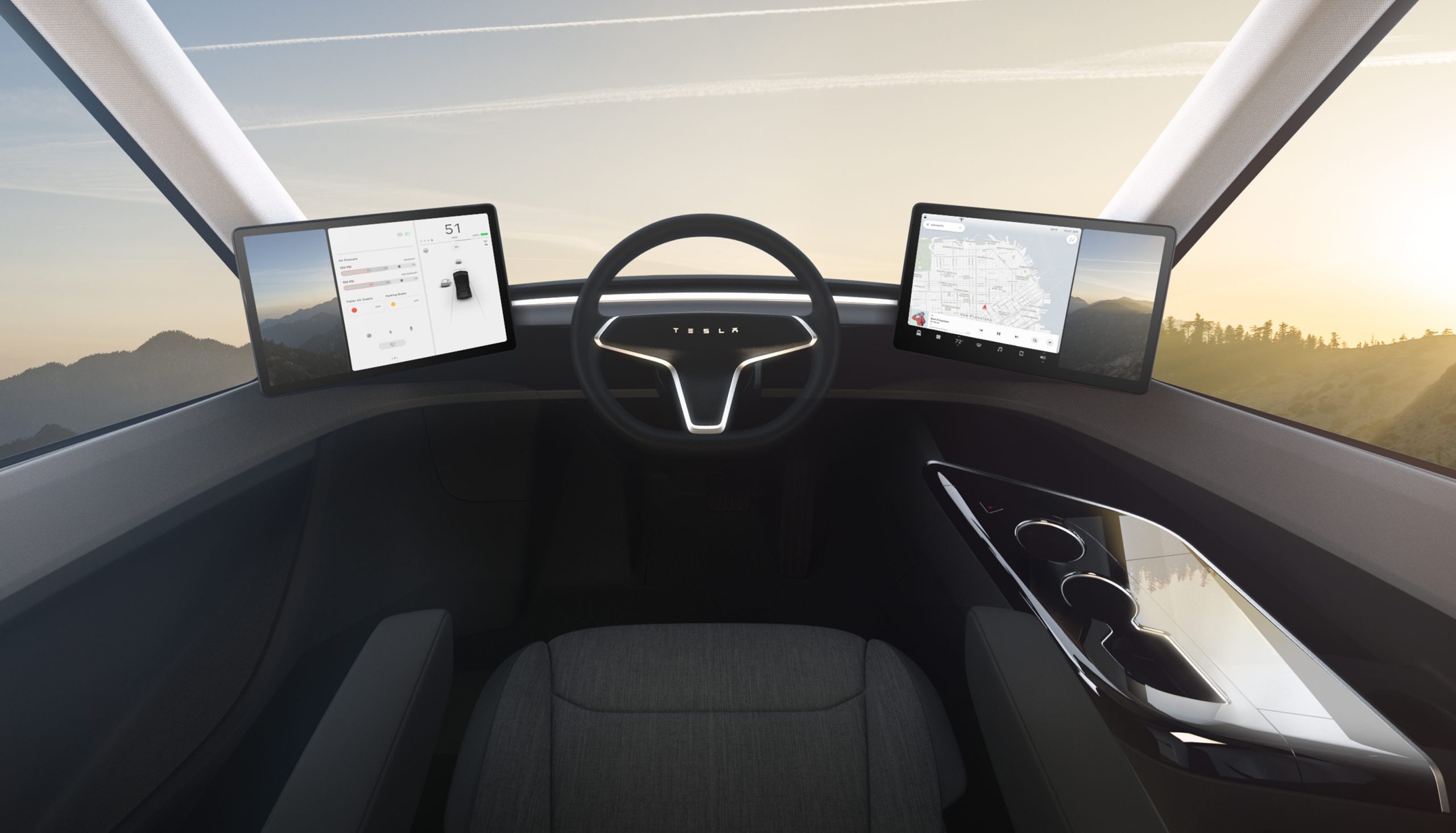
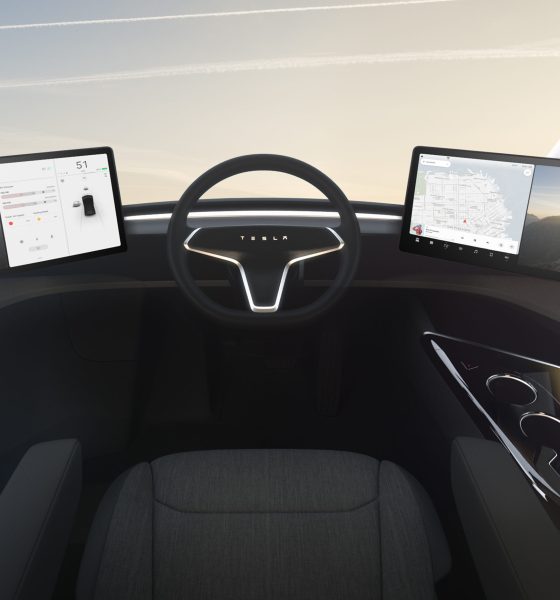
Investor's Corner
How Tesla’s Semi will dramatically alter the trucking industry
The Tesla Semi offers something to the trucking industry that could drastically alter the entire freight moving sector. The trucking industry has seen major changes since it began roughly a century ago and has, despite the assumptions of many outsiders looking in, been one of the more technologically-advanced industries in our nation. Trucks themselves have seen huge changes in the past few decades while the freight industry as a whole has been reinvented and revamped multiple times over in that same time period.
Nasdaq.com contributor Martin Tillier mentions the impacts that the Tesla Semi and others with similar game-changing technologies will have on the trucking industry long-term. Most notably with autonomous trucks and their electric powertrains.
“The technological change that benefits trucking and delivery businesses has been widely reported, but in my experience most people that I ask about it focus on the potential negatives rather than looking for opportunities,” writes Tillier. “..they ignore the biggest beneficiary of all: trucking companies. They are looking at a future where two of their major costs, fuel and drivers, will be dramatically lower..”
Those salient points are much bigger-picture than most commenting on the Tesla Semi and other related vehicles would note. Just about every major manufacturer of commercial vehicles, including Class 8 trucks, is getting in on the electrification game and many are also building towards automation. The companies most often noted, like Tesla and Nikola, are actually side-players compared to the already-established heavy-duty builders like Paccar (Kenworth, Peterbilt), Daimler, Volvo, and the like. Even manufacturers like Cummins are working with alternatives to petroleum-burning drivetrains.
The stakes are huge. According to the American Trucking Associations, over 70 percent of the freight (by tonnage) moved in the United States is moved by truck. There are about ten and a half billion tons of freight moved around the U.S. annually and about 3.6 million Class 8 trucks on the road pulling that freight.
The electrification of trucks is a big step. It won’t happen really quickly, but it will happen eventually. How, exactly, that electrification comes will depend on a lot of things. It could be the battery-powered Tesla Semi or it could be the hydrogen fuel cell-run Toyota-Kenworth collaboration. Or any mixture of things, including the range-extending turbine proposed for the original Nikola design or that of Capstone. Whatever the solution or solutions are, freight-hauling trucks of all sizes are going to become electric. That’s a given.
Why? For the same reason they all went to diesel a few decades ago. It’s more efficient and thus cheaper. Before diesel, most trucks were powered by gasoline and were extremely inefficient, hauling less weight and getting worse fuel economy. Diesel itself saw many changes over time as the engines it powered improved and emissions fell. Currently, trucks use around 38 billion gallons of diesel fuel a year. At four dollars a gallon, that’s about $152 billion in fuel. With electricity, costs could be a fraction of diesel. Roughly a quarter of the cost, in fact, in worst-case assumptions. More optimistic numbers would put it in the 1/16th to 1/8th fractions.
The gains with autonomous self-driving or driving assist technology are even higher. In trucking, the highest cost to the trucking company is the driver behind the wheel, with wages and benefits–not to mention legalities and downtime–having the highest impact on the bottom line. A truck driver can legally drive for 11 hours per day and most drivers average about 600 miles daily. An autonomous truck could drive 24/7, stopping only to load/unload or refuel. Self-driving trucks would also solve a problem that’s long plagued the trucking industry: driver shortages.
Truck drivers will lose jobs, yes. Eventually. Remember, we’re talking decades here, not years. When (not if) automated big trucks take over as the bulk of the industry’s means of moving freight, most drivers will be required to find new careers. We must remember, however, that truck driving is essentially made up of a labor force which has little formal training and mostly on-the-job experience as their primary resume point. These drivers become more skilled with time and hence demand higher wages. The most skilled workers in truck driving tend also be those closest to retirement. Replacements for those skilled drivers are new drivers who’ve completed perhaps three weeks of trucking school and a month of over-the-road training with a slightly more skilled driver as a mentor. This doesn’t make trucking an easy job, but it does mean that those with the most skills are the least likely to lose their jobs when automation becomes the norm.
We can argue until our fingers bleed, typing about the feasibility of the Tesla Semi and Elon Musk’s promises for the truck’s capabilities. Whether Tesla delivers on those promises is moot; as we know that someone, somewhere, and sometime very soon will deliver on similar promises regardless. The trucking industry is going through another sea change. Those in technology, used to a new iPhone every year and who hashtag about cryptocurrencies, might consider a decade or two as a long time to wait. Those in manufacturing and transportation, however, see twenty years as a single generation and their version of 2.0 has huge economic impacts on the nation’s and world’s economies.
The trucking industry knows that electrification and automation are coming. Fast. The Tesla Semi may or may not physically bring that revolution, but it certainly does symbolize it.

Investor's Corner
Tesla price target boost from its biggest bear is 95% below its current level

Tesla stock (NASDAQ: TSLA) just got a price target boost from its biggest bear, Gordon Johnson of GLJ Research, who raised his expected trading level to one that is 95 percent lower than its current trading level.
Johnson pushed his Tesla price target from $19.05 to $25.28 on Wednesday, while maintaining the ‘Sell’ rating that has been present on the stock for a long time. GLJ has largely been recognized as the biggest skeptic of Elon Musk’s company, being particularly critical of the automotive side of things.
Tesla has routinely been called out by Johnson for negative delivery growth, what he calls “weakening demand,” and price cuts that have occurred in past years, all pointing to them as desperate measures to sell its cars.
Johnson has also said that Tesla is extremely overvalued and is too reliant on regulatory credits for profitability. Other analysts on the bullish side recognize Tesla as a company that is bigger than just its automotive side.
Many believe it is a leader in autonomous driving, like Dan Ives of Wedbush, who believes Tesla will have a widely successful 2026, especially if it can come through on its targets and schedules for Robotaxi and Cybercab.
Justifying the price target this week, Johnson said that the revised valuation is based on “reality rather than narrative.” Tesla has been noted by other analysts and financial experts as a stock that trades on narrative, something Johnson obviously disagrees with.
Dan Nathan, a notorious skeptic of the stock, turned bullish late last year, recognizing the company’s shares trade on “technicals and sentiment.” He said, “From a trading perspective, it looks very interesting.”
Tesla bear turns bullish for two reasons as stock continues boost
Johnson has remained very consistent with this sentiment regarding Tesla and his beliefs regarding its true valuation, and has never shied away from putting his true thoughts out there.
Tesla shares closed at $431.40 today, about 95 percent above where Johnson’s new price target lies.
Investor's Corner
Tesla gets price target bump, citing growing lead in self-driving

Tesla (NASDAQ: TSLA) stock received a price target update from Pierre Ferragu of Wall Street firm New Street Research, citing the company’s growing lead in self-driving and autonomy.
On Tuesday, Ferragu bumped his price target from $520 to $600, stating that the consensus from the Consumer Electronics Show in Las Vegas was that Tesla’s lead in autonomy has been sustained, is growing, and sits at a multiple-year lead over its competitors.
CES 2026 validates Tesla’s FSD strategy, but there’s a big lag for rivals: analyst
“The signal from Vegas is loud and clear,” the analyst writes. “The industry isn’t catching up to Tesla; it is actively validating Tesla’s strategy…just with a 12-year lag.”
The note shows that the company’s prowess in vehicle autonomy is being solidified by lagging competitors that claim to have the best method. The only problem is that Tesla’s Vision-based approach, which it adopted back in 2022 with the Model 3 and Model Y initially, has been proven to be more effective than competitors’ approach, which utilizes other technology, such as LiDAR and sensors.
Currently, Tesla shares are sitting at around $433, as the company’s stock price closed at $432.96 on Tuesday afternoon.
Ferragu’s consensus on Tesla shares echoes that of other Wall Street analysts who are bullish on the company’s stock and position within the AI, autonomy, and robotics sector.
Dan Ives of Wedbush wrote in a note in mid-December that he anticipates Tesla having a massive 2026, and could reach a $3 trillion valuation this year, especially with the “AI chapter” taking hold of the narrative at the company.
Ives also said that the big step in the right direction for Tesla will be initiating production of the Cybercab, as well as expanding on the Robotaxi program through the next 12 months:
“…as full-scale volume production begins with the autonomous and robotics roadmap…The company has started to test the all-important Cybercab in Austin over the past few weeks, which is an incremental step towards launching in 2026 with important volume production of Cybercabs starting in April/May, which remains the golden goose in unlocking TSLA’s AI valuation.”
Tesla analyst breaks down delivery report: ‘A step in the right direction’
Tesla has transitioned from an automaker to a full-fledged AI company, and its Robotaxi and Cybercab programs, fueled by the Full Self-Driving suite, are leading the charge moving forward. In 2026, there are major goals the company has outlined. The first is removing Safety Drivers from vehicles in Austin, Texas, one of the areas where it operates a ride-hailing service within the U.S.
Ultimately, Tesla will aim to launch a Level 5 autonomy suite to the public in the coming years.
Investor's Corner
Tesla Q4 delivery numbers are better than they initially look: analyst
The Deepwater Asset Management Managing Partner shared his thoughts in a post on his website.

Longtime Tesla analyst and Deepwater Asset Management Managing Partner Gene Munster has shared his insights on Tesla’s Q4 2025 deliveries. As per the analyst, Tesla’s numbers are actually better than they first appear.
Munster shared his thoughts in a post on his website.
Normalized December Deliveries
Munster noted that Tesla delivered 418k vehicles in the fourth quarter of 2025, slightly below Street expectations of 420k but above the whisper number of 415k. Tesla’s reported 16% year-over-year decline, compared to +7% in September, is largely distorted by the timing of the tax credit expiration, which pulled forward demand.
“Taking a step back, we believe September deliveries pulled forward approximately 55k units that would have otherwise occurred in December or March. For simplicity, we assume the entire pull-forward impacted the December quarter. Under this assumption, September growth would have been down ~5% absent the 55k pull-forward, a Deepwater estimate tied to the credit’s expiration.
“For December deliveries to have declined ~5% year over year would imply total deliveries of roughly 470k. Subtracting the 55k units pulled into September results in an implied December delivery figure of approximately 415k. The reported 418k suggests that, when normalizing for the tax credit timing, quarter-over-quarter growth has been consistently down ~5%. Importantly, this ~5% decline represents an improvement from the ~13% declines seen in both the March and June 2025 quarters.“
Tesla’s United States market share
Munster also estimated that Q4 as a whole might very well show a notable improvement in Tesla’s market share in the United States.
“Over the past couple of years, based on data from Cox Automotive, Tesla has been losing U.S. EV market share, declining to just under 50%. Based on data for October and November, Cox estimates that total U.S. EV sales were down approximately 35%, compared to Tesla’s just reported down 16% for the full quarter. For the first two months of the quarter, Cox reported Tesla market share of roughly a 65% share, up from under 50% in the September quarter.
“While this data excludes December, the quarter as a whole is likely to show a material improvement in Tesla’s U.S. EV market share.“
